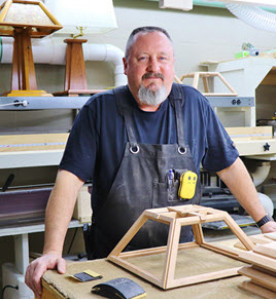Playing With Price Points
Artists Share Formulas for Setting Prices

When Shields Long took his custom, craftsman lamps to an art show in one of the wealthiest parts of the country, he figured that if someone was going to buy a $1,000 floor lamp from him, it was going to be there.
He was wrong. “We did not sell anything the entire weekend. Other artists I knew did the same thing,” Long said. “Nobody seemed to buy much of anything except a few paintings and a few cutting boards, maybe a little jewelry.”
The seasoned, full-time mixed media artist who was next to Long at that spring show in Naples, Florida, told him he needed to price his floor lamp at $2,500. When people walked by and saw $975 on the tag, they thought it must be junk, the artist told Long.
“It made perfect sense,” Long said. “My work is not cheap, so the driver to sales seems to be a person’s reaction or passion for my pieces.”
Long is among the artists who responded to a Sunshine Artist survey about price points. Artists shared how many different price points they have at a typical show, what their price point dollar ranges are, how they established them, and whether they change their price points based on the show they are at.
The number of price points these artists typically have ranged from five (15% of the respondents) to as many as 50 (2% of the respondents). Eleven percent of the respondents have 20 different price points at most shows.
What’s it Worth?
Many artists said they established their price points based on material costs and the time it took to create their work. Some based them on demand, size, or what others charge for similar items.
“Figure out your costs, your level of quality, and how much you need/want to make and then make your prices match your goals,” said Paul Grecian. The photographer typically has six different price points at a show, ranging from $65 to $850.
“People buy what they like; don’t undercharge to try to match someone else’s price. You don’t know what kind of business they are doing. No one benefits from a race to the bottom,” Grecian said.
Jason Wallace agrees. “Pay more attention to your own supply costs and your own skill, and avoid comparing yourself to others,” said the photographer.
He usually has six different price points at a show, ranging from $40 to $1,200. “I establish my prices partly on research on hard costs, partly on market pressure, and then dialed it in with raw trial and error,” Wallace said.
Steve Born creates wall-mounted, wood sculptures of the human form. He explained how he figured out his price points. “Most of my pieces were priced between $300 to $600. After some very slow art fairs and observing what was being purchased at other artists’ booths, I created a couple pieces in the $150 range,” Born said. “The first show I did with these new pieces, I sold six of them in one weekend. I call these pieces my booth payments. The larger pieces I refer to as my mortgage payments.”
Andrea Feinberg, a jewelry artist, typically has 30 different price points at a show. Her price point dollar ranges are from $35 to $700. “Focus less on Cost of Goods Sold (COGs) and more on perceived value and the environment created by the show, including artist quality and marketing messaging,” is her advice to other artists.
Fiber artist Brian Konkol said he uses a “a formula of time, materials x two, plus 30%.” At most shows, he has eight different price points, ranging from $14 to $50.
Mike Perronne, a mixed media artist, has advice for new artists. “Figure out the minimum wage that you are willing to work for per hour if you are just starting. Calculate your hours and material cost to set your initial price that you need to charge to reach your goal,” he said. “As you get more experience, you will find out that your speed will increase, yielding more product in a shorter time, which will raise your profit margin. Then track which products are selling fastest and start gradually bumping up your price until it starts impacting your sales.”
